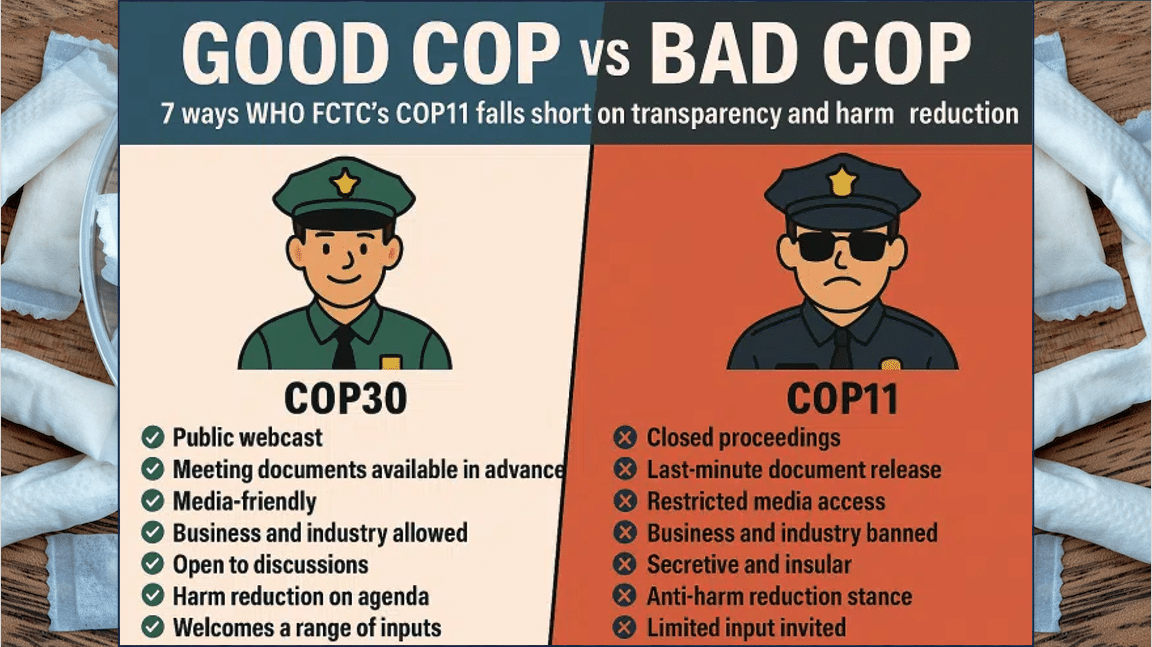
Embracing nicotine pouches: a key to a smoke-free America
Myths about nicotine pouches have been sparking moral panic in the US. But embracing nicotine pouches could be the key to ditching deadly cigarettes. Helen Redmond, a social worker, journalist and fighter for safer nicotine options for those who need them most, has some advice for American politicians aiming to lead the country into a smoke-free future.
Helen Redmond is a recognized expert in substance use with a focus on harm reduction strategies. Her experience spans over 20 years as a licensed clinical social worker, where she’s worked in medical, housing and community mental health settings.
Helen’s expertise extends to mental health and nicotine dependence. Notably, she played a key role in organizing the first US Tobacco Harm Reduction Conference in 2016.
Helen believes that achieving a smoke-free future in the US presents a significant challenge.
“Decades of misinformation and entrenched myths need to be challenged and debunked in order to implement effective policy solutions,” she explains to Snusforumet.
Combating misinformation with facts
Research suggests a disconnect between public perception and the scientific evidence regarding the relative risks of nicotine products compared to cigarettes.
“For years, people have been bombarded with messages about how nicotine products, such as nicotine pouches, are just as bad as cigarettes, which simply isn’t evidence based,” explains Helen.
Helen has a clear idea on how to combat this fog of misinformation. First, she emphasises that a multi-pronged approach is necessary, starting with dispelling myths.
“We have to be clear and fact-based in our public education campaigns,” she says.
“People need to understand the science – that smokeless nicotine products, such as pouches and vapes, are significantly safer than cigarettes. Second, we should highlight success stories. We know these products are helping smokers quit, and those stories are powerful motivators.”
Learning from past public health successes
There have been similar public health initiatives over the years, and successful ones at that. Helen is certain that the same strategies can be applied to any tobacco harm reduction campaign.
“Take the example of harm reduction programs for drug users,” she says. “We know providing sterile syringes helps prevent the spread of diseases. Similarly, making safer nicotine alternatives affordable and accessible can significantly reduce smoking rates and keep people alive.”
Helen however, is aware that dispelling myths and increasing awareness among public health staff is easier said than done. Many physicians and nurses simply won’t recommend alternative nicotine products, such as pouches and vapes.
“They are not recommending the use of safer nicotine products, or talking about the documented benefits of using nicotine” Helen says.
“Unfortunately, they’re stuck in a time warp, in which they’re still demonising the use of nicotine while recommending the old nicotine replacement products, such as gum and patches which, I can tell you from my own personal experience working with people who smoke, and from the results of lots of data, simply don’t work for the vast majority of people.”
Innovative solutions for a smoke-free future
Helen’s solution for overcoming this obstacle is characteristically nonconformist and, once you get your head around it, entirely sensible.
“We need to have nicotine product shops inside of hospitals, in particular hospitals that have inpatient psychiatry units, because these are places where you’ll find a lot of smokers,” she explains.
“These stores will sell pouches, vapes, and snus and they will help people make the transition to stop smoking which will have a significant impact on smoking rates among vulnerable groups. Safer nicotine products should also be available at syringe service programs, safe consumption sites, drug treatment centers, and at harm reduction-based community programs.”
It’s a neat package of ideas. By prioritising public health, adopting evidence-based approaches, learning from successful models and finding creative ways to reach those most in need, American policymakers can create a strategy that significantly reduces smoking rates. Safer nicotine products, such as pouches and vapes, can be powerful tools in achieving this goal.
Sweden’s smoke-free success: Three lessons for US politicians
1. Despite the pressure from some anti-nicotine groups, do not ban flavoured nicotine pouches. The Swedish experience shows that offering a wide variety of flavours encourages more smokers to switch from tobacco to nicotine pouches.
2. The Swedish experience also emphasizes that offering a wide assortment of nicotine products, including nicotine pouches and snus, will lower tobacco-related deaths. Nearly one in four adults in Sweden use nicotine daily, which is on par with European averages. However, Sweden has 44% fewer tobacco-related deaths among men compared to the rest of the European Union.
3. Raise cigarette taxes but keep other non-combustible nicotine product taxes level or even reduce them. Sweden’s government recently raised cigarette taxes by 9%, kept taxes the same on nicotine pouches and vaping, and cut the tax on snus by 20%. Encourage smokers to take the leap to non-combustible products.




